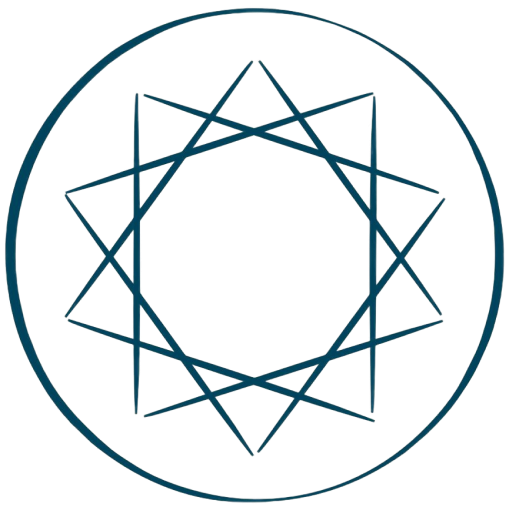The Enneagram is probably the most precise classification system in existence, because it defines with impressive clarity what the 9 personality types and their 27 subtypes are like.
The Enneagram helps us to understand human nature in depth. It is also an extraordinary therapeutic method for personal development and improving relationships.
Click on the enneatype you want for more information

Personally, for me (Alberto), knowing my personality type with the Enneagram was a turning point in my life, in my sense of identity and my relationships with others.
When I was young, I was a boy with many insecurities that affected me negatively, blocking me when making decisions and generating a toxic skepticism towards others. Knowing my personality profile literally marked a before and after in my life, because I began to understand what was happening to me and how to overcome it. I began to gain self-confidence, clarity when thinking and making decisions, and to generate a better “spider sense” to know which people to place my trust in.
Metaphorically, the Enneagama is
In short, the Enneagram is an extraordinary road map for self-knowledge and progress in life, love, work, spirituality and the search for life purpose.
In our school we explain the Enneagram as 9 worldviews or macroperceptions of reality; they are like 9 photochromic lenses that filter the reality perceived by each type of personality. These colored glasses or lenses make each one of us not see things as they are, but with the nuance, filter and bias of our personality.
So, an enneatype 1 would have lenses the color of perfectionism and correctness, enneatype 2 of connection and bonding, 3 of excellence and recognition, 4 of authenticity and originality, 5 of freedom and humanism, 6 of security and confidence, 7 of enthusiasm and stimulation, 8 of strength and power, 9 of harmony and fluidity.
Each of these 9 visions of reality is related to a particular way of being, feeling, thinking and behaving. Thus, we can identify 9 different types of personality through these 9 conceptions of human nature.
Traditionally, the enneagram has been explained by giving a name or label to each enneatype, with the classification by Russ Hudson and Richard Riso being very famous:
However, at AutoGnosis, the school of Self-Knowledge, we believe that this classification can lead to confusion when identifying people; for example, any enneatype can be perfectionist in their own way; or we can find enneatype 4s who are not artists, or enneatype 7s who are not very cheerful.
In our school we emphasize that what is important is the internal motivation behind each behavior. Thus, we focus on what each enneatype desires, strives to achieve, how they seek to feel, and what, if they feel they are lacking, they will enter a state of stress and dissatisfaction.
The Enneagram describes many aspects of human nature: 9 personality tendencies, 9 behavioral traits, 9 psychological tendencies, 9 ways of seeing the world, 9 ways of thinking, 9 ways of feeling emotions, 9 decision-making styles, 9 virtues and vices, 9 talents and defects, 9 blind spots, 9 Achilles heels, 9 skills and superpowers… and it even describes 9 spiritual characteristics that human beings present.
In psychological terms, we could define the Enneagram as a classification system that describes 9 personality tendencies, in which each of them has a cognitive, emotional and behavioral strategy.
These mental patterns, structures, maps or cognitive schemes bias individuals’ perceptions, emotions and behaviors, and have been forming since childhood.
These personality patterns are so incredibly powerful that they have shaped an entire system of beliefs at an unconscious level that skews the individual’s perception of reality. For this reason, we said earlier that each Enneatype (personality type) has glasses of a particular color through which it filters, perceives, understands and interprets reality.
To understand the Enneagram, one must imagine it in motion.
An Enneagram without movement is a dead symbol; the living symbol is in motion, the path of man’s transformation is part of perpetual movement…» (Gurdjieff)
These personality patterns are so incredibly powerful that they have shaped an entire system of beliefs at an unconscious level that skews the individual’s perception of reality. For this reason, we said earlier that each Enneatype (personality type) has glasses of a particular color through which it filters, perceives, understands and interprets reality.
The symbol consists of a hexagon and a central triangle, surrounded by a circle. The hexagon and the triangle form 9 points, and each of these points shows an aspect of human nature.
Our research has led us to the conclusion that there is no reliable source that proves the true origin of the enneagram. The oldest surviving documents on the enneagram are the “proto-enneagrams” drawn by Ramon Lull in the 23rd century, where he identified 9 human virtues and defects placed around a circle and linked together by orthogonal lines.
Our research has led us to the conclusion that there is no reliable source that proves the true origin of the enneagram. The oldest surviving documents on the enneagram are the “proto-enneagrams” drawn by Ramon Lull in the 23rd century, where he identified 9 human virtues and defects placed around a circle and linked together by orthogonal lines.





CONTACT
ADDRESS
Spain : Menendez Pelayo Avenue 21 Madrid
Italy : Via Giovanni Nicotera 29 Rome
MENU
COURSES
SUBSCRIBE
Sign up to receive all the latest news and access the free online course




AutoGnosis © 2024 All rights reserved